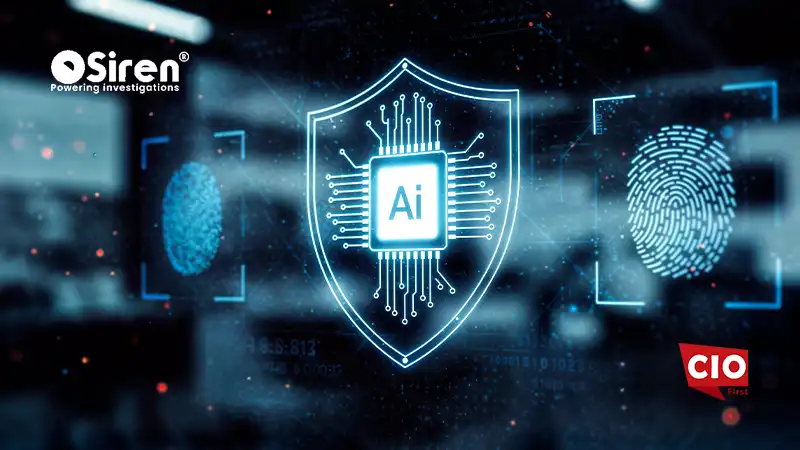NetApp, the intelligent data infrastructure company, announced network resiliency capabilities to help customers better protect themselves in the face of ransomware threats and recover data. NetApp is one of the first companies to integrate artificial intelligence (AI) and machine learning (ML) directly into enterprise storage to combat ransomware in real time. Whether data is stored locally or in the cloud, NetApp’s network resilience capabilities can protect an enterprise’s primary and secondary data.
According to Forrester , cybercriminals are increasingly targeting critical infrastructure and supply chains with ransomware attacks, and operational disruptions in these areas can cost millions of dollars. Based on this, NetApp’s 2023 Data Complexity Report states that 87% of business executives rank defending against ransomware as a high or top priority for their organizations. As cybercriminals breach perimeters, networks and identities, storage becomes the last line of defense for an enterprise’s most critical data. The threat of ransomware is looming, and businesses need solutions that not only protect their data, but also quickly recover lost data and resume normal operations. NetApp continues to update its network resilience solutions and leverages artificial intelligence to keep customer data secure and accessible when needed.
“NetApp is aggressively leveraging artificial intelligence to protect customer data from cyber threats,” said Mignona Cote, chief security officer at NetApp. “We are the first storage vendor to clearly and financially guarantee that our data storage products are resistant to ransomware. Today, we This leadership position is further solidified with updates that enable our customers to protect their data comprehensively, continuously and easily.”
NetApp is committed to designing data storage and management systems to maximize data protection and security while meeting data governance and compliance standards, and its latest updates include
- ONTAP Autonomous Ransomware Protection with Artificial Intelligence (ARP/AI) will usher in a new generation of real-time enterprise storage ransomware protection with the higher accuracy and performance needed to detect and mitigate new, more complex cyber threats. Three years ago, NetApp pioneered autonomous, real-time detection of ransomware directly in primary enterprise storage. Now, NetApp will be the first to use adaptive AI/ML models built directly into enterprise primary storage to view file-level signals in real time to detect the latest ransomware attacks with over 99% accuracy and recall. NetApp will launch the first technology preview of ARP/AI next quarter.
- NetApp BlueXP Ransomware Protection, now in public preview , provides a single control plane that intelligently orchestrates and executes end-to-end, workload-centric ransomware defense. Customers can now identify and protect critical workload data with the click of a mouse, accurately and automatically detect and respond to potential attacks, and recover workloads in minutes, protecting their critical data and minimizing costly outages.
- Application-aware storage ransomware protection based on NetApp SnapCenter 5.0 provides immutable ransomware protection for applications. SnapCenter now uses NetApp’s leading ransomware protection technology, previously used for unstructured data, for application-consistent backup. SnapCenter 5.0 includes support for key ONTAP features such as tamper-resistant Snapshot copy locking, SnapLock protected file storage volumes and SnapMirror business continuity to provide stronger data protection for applications and virtual hosts. SnapCenter 5.0 supports the use of NetApp AFF, ASA and FAS to protect local and cloud applications.
- Now generally available, NetApp BlueXP disaster recovery integrates seamlessly with VMware infrastructure and provides storage options for on-premises and major public cloud environments. This comprehensive solution reduces costs by eliminating the need for a separate backup disaster recovery (DR) infrastructure. NetApp BlueXP Disaster Recovery simplifies failover and failure recovery processes, enabling smooth migration from on-premises VMware infrastructure to the public cloud or on-premises data center.
- NetApp Keystone Ransomware Recovery Guarantee extends NetApp’s current ransomware recovery guarantee to NetApp Keystone, our leading storage-as-a-service product. With this guarantee, NetApp will ensure the recovery of snapshot data in the event of a ransomware attack. If a snapshot data copy cannot be restored through NetApp, we will provide compensation*.
“Today’s cybersecurity teams face the daunting task of protecting company data from ever-evolving threats, especially ransomware,” said Archana Venkatraman, research director for cloud data management at IDC. “NetApp provides a secure, unified storage infrastructure that makes storage a The foundation of ransomware defense reduces the burden on cybersecurity teams. Companies looking to increase network resilience and migrate protection will increasingly look to vendors that adopt a security-by-design approach and develop unified storage and data services.”
Derek Elbert, solutions architect at WWT, said: “Using NetApp in the Advanced Technology Center has greatly simplified the replication process of VMware virtual hosts and their underlying data stores, meeting or even exceeding recovery baselines. With NetApp’s solution, we successfully established cloud files Recovery strategies for storage volume workloads or virtual hosts without the need for an existing disaster recovery strategy and are fully managed through NetApp BlueXP. This changes the way we run VMware disaster recovery.”
“To store sensitive genomics and health data, we must have the right technology in place with multiple layers of security built in,” said Mark Cowley, deputy director of the Children’s Cancer Institute. “NetApp allows us to be sure we are sharing only with authorized researchers.” The right data. The last line of defense is the weakest network-based system, so we implemented role-based access controls and added resilience to all our tools.”
NetApp’s latest cyber resilience update enables enterprises to autonomously respond to cybersecurity threats in complex hybrid and multi-cloud environments, leveraging artificial intelligence to identify threats and prevent operational disruptions.
SOURCE: BusinessWire


























